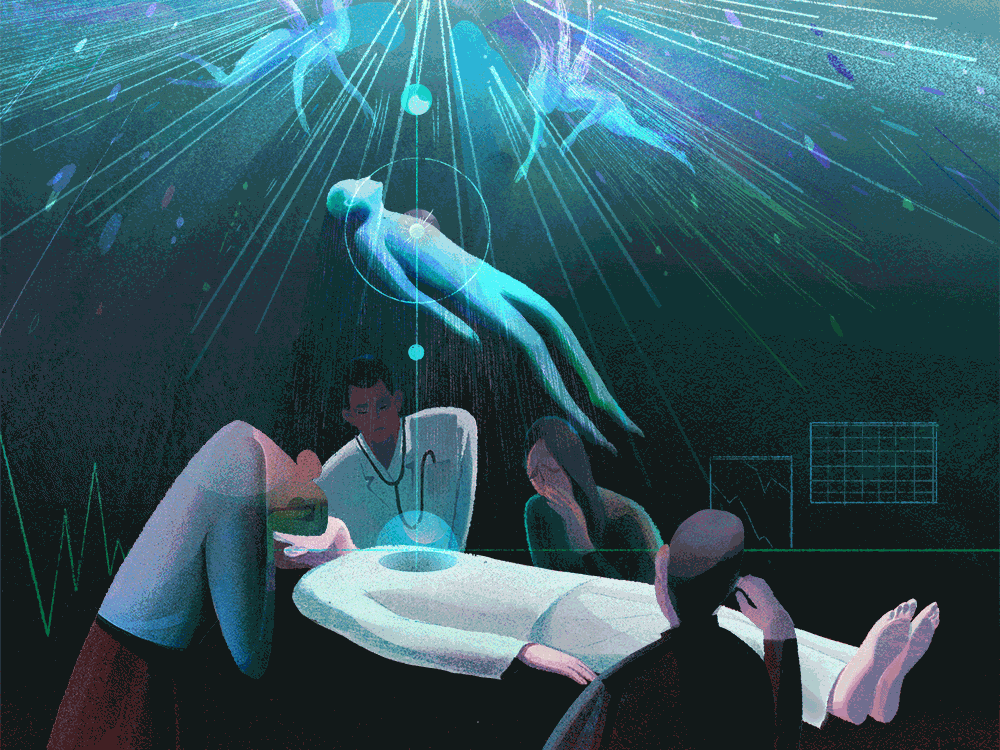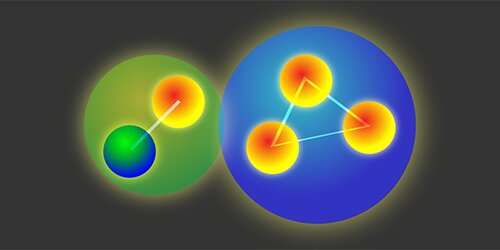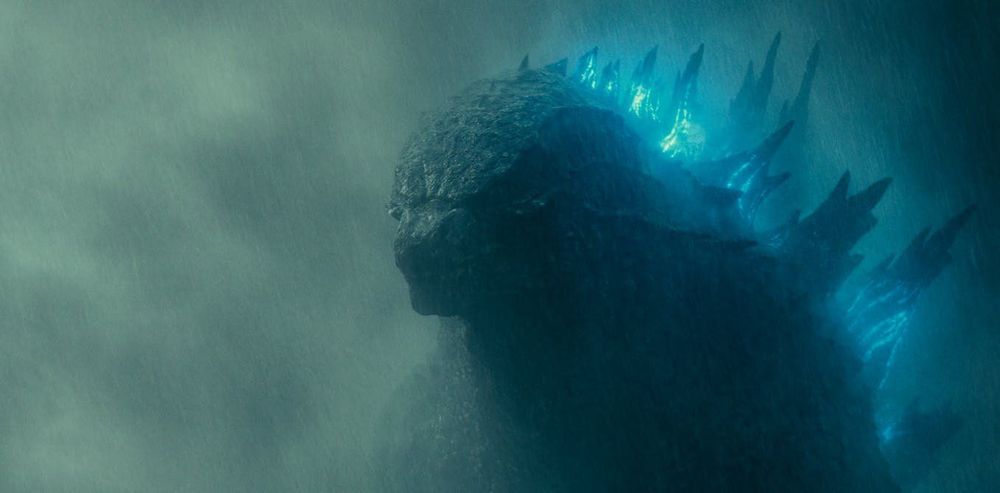Page 8683
Jun 7, 2019
New evidence from LHC shows pentaquark has a molecule-like structure
Posted by Saúl Morales Rodriguéz in category: particle physics
A team of researchers working on the LHCb collaboration has found evidence showing that a pentaquark they have observed has a molecule-like structure. In their paper published in the journal Physical Review Letters, the group describes the evidence and the structure of the pentaquark they observed.
Four years ago, a team working at the Large Hadron Collider (LHC) observed what is known as a pentaquark by smashing protons into each other. Its existence had been theorized, but it was not until the right technology was deployed at the LHC that researchers were able to observe it with a reasonable degree of confidence. It was subsequently found to be a particle made up of four quarks and one antiquark. (Quarks are indivisible particles that make up neutrons and protons.)
In this new effort, the researchers have gained a better perspective on the actual organization of the pentaquark. They report that they have nine times as much data from observations as they had when the pentaquark was first observed, so they have high confidence in their findings. They report that the pentaquark was made up of a three-quark baryon and a quark-antiquark meson, and that they were bound together in a way reminiscent of a molecule.
Continue reading “New evidence from LHC shows pentaquark has a molecule-like structure” »
Jun 7, 2019
Modelling reveals new insight into the electrical conductivity of ionic liquids
Posted by Saúl Morales Rodriguéz in category: particle physics
A collaborative investigation has revealed new insight into how room temperature ionic liquids (RTILs) conduct electricity, which may have a great potential impact for the future of energy storage.
The research focuses on the debate surrounding the physical mechanism of the electrical conductivity of RTILs. Their charged positive and negative organic ions lead them to be good conductors, but the conductivity seems paradoxical. Their high conductivity arises from their high density of charged ions within the liquid, but this density should also mean that the positive and negative ions are close enough to neutralise one another, creating new, neutral particles which cannot support an electrical current. The modelling attempts to identify how conductivity is maintained in RTILs in light of these contradictory factors.
The research involved an international group of researchers, including Professor Nikolai Brilliantov of the University of Leicester and led by Professor Alexei Kornyshev of Imperial College London and Professor Guang Feng of the Huazhong University of Science and Technology.
Continue reading “Modelling reveals new insight into the electrical conductivity of ionic liquids” »
Jun 7, 2019
How Much Would It Cost to Be Iron Man in Real Life? [INFOGRAPHIC]
Posted by Quinn Sena in category: entertainment
It would cost $10 billion to fund superhero Iron Man’s lavish high-tech lifestyle in Iron Man 3 — about $9 billion more than past films.
Fictional billionaire Tony Stark is the CEO of his company Stark Enterprises, but in reality, what doesn’t he do? He’s a chemist, an inventor, an engineer and an entrepreneur. He may bring in the big bucks, but he’s certainly a spender when it comes to being properly equipped to ward off bad guys.
SEE ALSO: How Much Would It Cost to Be Batman in Real Life? [INFOGRAPHIC].
Continue reading “How Much Would It Cost to Be Iron Man in Real Life? [INFOGRAPHIC]” »
Jun 7, 2019
Google’s TensorNetwork library speeds up computation
Posted by Quinn Sena in category: futurism
Google has open-sourced TensorNetwork, a tensor network library designed in collaboration with the Perimeter Institute for Theoretical Physics and X.
Jun 7, 2019
Godzilla, King Kong: films are actually spot on in how to defeat kaijus – mathematician
Posted by Quinn Sena in category: entertainment
How do you get rid of a giant pest like Godzilla, King Kong, or any of the other assorted kaiju (Japanese for “strange beast”)? Evidence from films suggests that these monsters are highly destructive and tremendously difficult to kill.
To a mathematician, however, this situation is nothing more than a predator-prey interaction problem. By accurately simulating the properties of the species we want to eradicate, we can predict the required properties of the predators we would need to create. If we look to the movies that made them famous, we find two alternative strategies for dealing with an invasion of multiple monsters. We could build our own mechanical monsters, or create a kaiju of our own.

Biology professor and researcher Christopher Cullis said he pondered two big questions when he first caught sight of the wild marama bean plant, its definitive patches of green leaves standing out in contrast from among an otherwise parched and brown Namibian landscape.
“Why isn’t this plant affected by the lack of water like everything else—and why isn’t it being eaten by any wildlife?” Cullis said, turning one of the walnut-sized beans over in his fingers and recalling his first trip to the coastal southwest African country about a decade ago. “The answers to those questions make this a very interesting and important legume.”
Jun 7, 2019
Everything as Code: The future of ops tools
Posted by Quinn Sena in categories: futurism, innovation

How do we manage our complex, multi-cloud, hybrid infrastructures? Seth Vargo maps the operations tooling ecosystem you need to know in order to maintain your sanity, but he also looks into the future of infrastructure as code tools and what cool innovations we can expect.
















